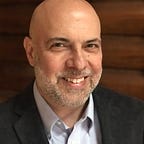Kenny’s Premonition
In 2013, the year after he and two others were ambushed and shot on a Rochester, New York, street, Kenny Mitchell told an interviewer, “I’m young, and all my friends is incarcerated or dead.” He was 24, one year shy of the age at which “they say” men in his situation will inevitably die, he pointed out. At another point in the interview, he mused about his attachment to Rochester “even though I’ll probably die, yo.”
Kenny had survived grievous injuries in the attack that killed his best friend, Lawrence Richardson, 22, and that wounded a third man. In March, Longreads published my story about that shooting, what the murder investigation revealed, and the backstory of the crime, its victims, and their community. Lawrence and Kenny had met through their work for a youth group, Teen Empowerment, that strives to save youth in an original and powerful way. It often succeeds, but it’s too small to transform on its own such a troubled place, where gun violence and poverty reach staggering levels. When the young men and women who work at Teen Empowerment finish their stints there, they go back to the same streets that pose such mortal dangers.
In that story, I noted Kenny nearly died from the shooting. He had a collapsed lung and spent 11 days in a hospital. Shaken by the sound of his father’s voice as he frantically pleaded for help in a 911 call seconds after the shooting, I tried to find and talk to Kenny during the four-year span of my reporting on the story, but I never succeeded. When I spoke to Teen Empowerment people and Lawrence’s family about Kenny, I often heard the same phrases: Kenny had “issues.” An unstable life had gone even further off the rails after the trauma of his shooting and the loss of the friend he considered a brother. Lawrence and Kenny, I was told, influenced each other in both good and unhealthy ways. “Lawrence really had a way of picking Kenny up,” Teen Empowerment director Doug Ackley once told me. But, Lawrence’s family told me also, Kenny had a way of encouraging Lawrence’s drinking and drugging. I decided not to go into all that, in large part because I wasn’t able to talk to him about his story in his own words.
In the months and years after the triple shooting, Kenny sank deeper into alcohol and drug use, veering in and out of homelessness and jail. To his friends he was a source of worry and regret.
Last Sunday, July 5, 2020, police in Niagara Falls, New York, more than 80 miles west of Kenny’s home, were called just before dusk to a parking lot to check on a man seen lying down. There they found Kenny, dead from multiple stab wounds. He was 31. Kenny beat the odds he believed he’d been given, but not by much.
Kenny died just a few blocks from the famous scenic overlooks at Niagara Falls. The gritty city that most tourists don’t see mirrors Rochester’s crime and post-industrial poverty. In such places, many homicides and assaults go unsolved. But, in this case, police quickly arrested a suspect. The crime, they told the Niagara Gazette, was “not a random act” but apparently a dispute between Kenny and someone he knew. The suspect is 26.
Those of us who cover community violence, even when we’re focused on its solutions, can easily fall into a trap of defining people and places by their problems. I sought in my Longreads story to show how those problems obscure a larger truth, about the hard work of community transformation and grassroots anti-violence activism, and of the yearning so many young people have for safety and a real future. So I owe it to Kenny not to make his epitaph only about his problems.
Lauren Petracca, who as a student photographed the striking portrait of Kenny that accompanies this post, was a photojournalism student when she produced the 2013 video I linked to in the intro. She told Kenny’s story then without pasting a happy face on it. Kenny himself, shown in the video drinking and scrounging cigarette butts and lamenting he’d become the homeless character he’d once scorned, expressed disappointment in himself. But he also expressed his love for Lawrence. Seen visiting Lawrence’s grave, he recalled his friend’s effervescence and loyalty. “Those was the greatest moments of my life,” he told Lauren.
In a Facebook post hours after learning of Kenny’s death, Lauren expressed her grief in a way that demands she be given the last word. Yes, Kenny was open about his problems, and he had many. But, “he was so much more than that,” Lauren wrote. He clowned for her camera while slurping a soft drink. He innocently asked her to explain what women mean when they talk about PMS. He reveled in a simple burgers-and-beach outing. Kenny was indeed more than his problems, and more than his trauma.
On Sunday night, Lauren concluded, “We lost a beautiful soul.”
